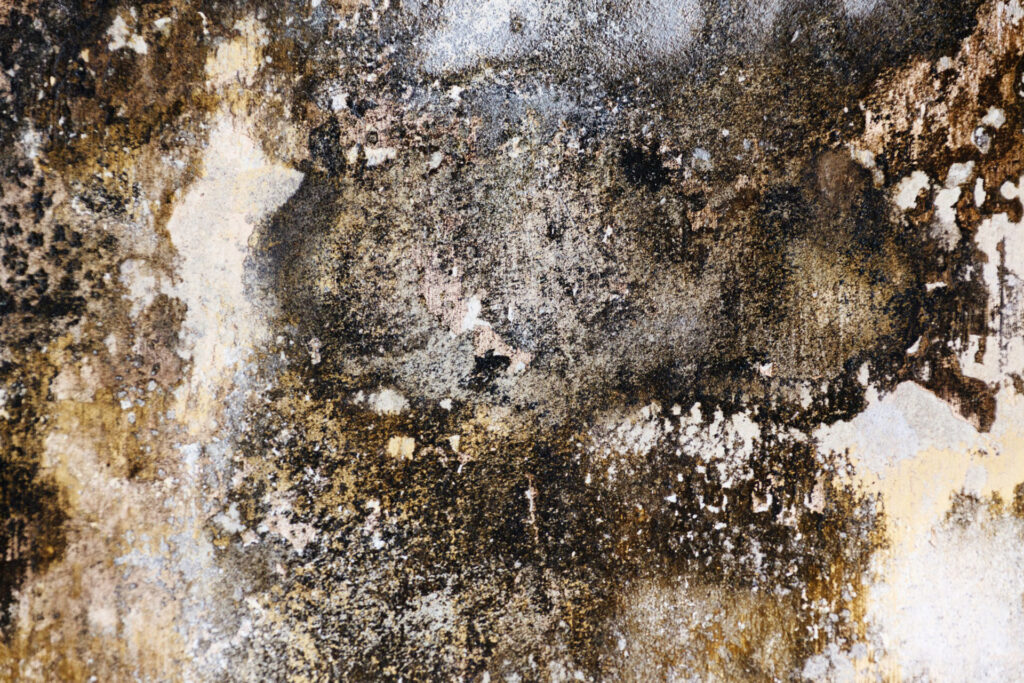
Homeowners insurance policies typically keep their wording very vague in regards to mold coverage. Usually, these policies do not cover mold damage except for when the mold is a direct result of a claim they do cover, such as flooding or water damage.
WHEN DOES HOMEOWNERS INSURANCE COVER MOLD REMOVAL?
If mold does develop due to events such as this, you should be able to file a claim for mold removal. Typical examples of when it is covered include:
- A broken water heater that releases water that causes black mold to grow on the walls
- After a home fire, mold might develop after firefighters have extinguished the fire
- A broken dishwasher that could flood the kitchen that causes mold to grow in the base of your cabinets
HOW MUCH WILL INSURANCE COMPANIES COVER?
Damage from mold can cost anywhere from $15,000 to $30,000 to fix, so many insurance companies limit the amount they’ll pay with maximum limits of anywhere from $1,000 to $10,000. You can, however, purchase additional riders to cover more mold damage, but that can be rather expensive, particularly in states sch as Florida where mold is more prone to grow.
Most insurance companies consider mold to be due to the homeowner’s own neglect. Even a minor water leak can lead long-term damage that the insurance company would likely consider as not being repaired immediately and will deny any coverage.
Also keep in mind that mold caused by regional flooding will not be covered as regional flooding is typically excluded from most insurance policies. You can, however, purchase extended coverage that will cover mold damage caused by flooding.
Typical examples of when mold isn’t covered by your insurance company include:
- Mold infestation caused by a leaky faucet or bathtub
- Black mold growth due to not using a dehumidifier in your basement
- Storm flooding and its resulting mold growth
HOW TO FILE A CLAIM
Sometimes, a mold claim will occur at the same time with another claim. For instance, if you experience flooding in your home due to a busted pipe, the insurance company may additionally send out a mold remediation team to properly dry out the inside of your home to prevent future mold growth. This is a great scenario, as it takes care of two separate claims at once: one for the busted pipe, and another for future mold removal.
Be sure and ask your insurance agent if the mold remediation is covered by your claim, as well as keeping detailed records of all repairs and damaged areas in case of future claims.
To be certain you’re properly covered, be sure and follow these steps:
- Get a hold of your insurance agent as soon as possible so that they can send out an adjuster to assess the cost of the damage and whether or not it is related to the claim
- Don’t try and clean anything, as the insurance adjuster will need to properly review the damage. However, do open windows and run a dehumidifier or fan to help dry and the room and hopefully prevent any mold growth
- Take photographs of all the damaged areas and property, and collect any other photos you might have from previous water damage to add to your claim
- Be sure and carefully look over your policy and get a hold of your insurance agent to see what’s covered in your policy
Remember, it’s important to try and prove that the mold is a direct result of any other water damage claim so that you don’t end up paying for two different deductibles. It’s in the insurance company’s best interest to consider the mold as a separate claim, so they’ll more than likely put up a bit of resistance during the process.
HOW TO PREVENT MOLD GROWTH
The most inexpensive way to deal with mold growth is to prevent it from ever happening. Consider following these steps:
- Regularly clean, ventilate and dehumidify areas of your home that are prone to mold growth
- Regulate the humidity of your home with the use of air conditioners and/or dehumidifiers
- Utilize exhaust fans in bathrooms and kitchens
- Don’t carpet basements or bathrooms, which are prone to humidity
- Make sure water does not collect under inside houseplants
- Regularly use bleach or other mold prevention cleaners in bathrooms and kitchens
- Keep outside rain gutters clean and free of debris
- Regularly check laundry rooms and cabinets beneath sinks for dampness
- Inspect and repair or replace hoses on appliances such as refrigerators or dishwashers every 5 ears
HOW DO YOU KNOW IF THERE’S MOLD IN YOUR HOME?
- Smell: Mold has a very musty scent than will often smell the strongest in the room where it’s located. However, if you can smell it once turning on your air conditioning or heater, then it may be residing in those systems.
- Visual: Sometimes mold may not be that easy to see. For instance, the grout of bathroom tiles is the perfect spot for mold to grow. If you can see or feel a furry texture, then that is more than likely mold. Mold colonies can appear as a uniform pattern in it’s growth.
- Sickness: If you or anyone in your home is experiencing asthma, sore eyes, itchy skin, runny or blocked noses, sneezing, coughing, or sore throats, these could be symptoms of mold exposure.
Contact Don Lamont at dalamont.com/contact/ or email him at don@dalamont.com with any questions.


